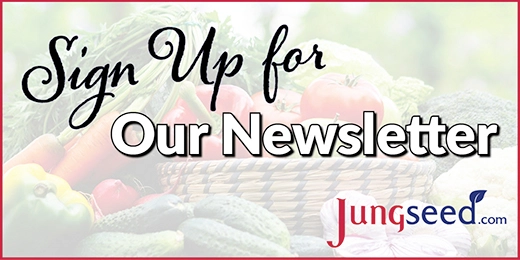General Garden Disease Management - Solution Guide
This Solution Guide provides an informative and valuable overview of methods, measures, and strategies for managing and preventing basic garden plant diseases. Limiting disease problems is relatively easy but requires scouting, proper identification, and background knowledge.
- Disease management = Proactive steps to avoid or reduce disease issues.
- Disease control = Reactive steps to mitigate symptoms and limit disease pressures.
This guide does not list specific disease management or control treatments. Treatments for particular plant diseases will vary depending on the circumstances of the crop or host plant, their location, type of disease, disease severity, control of vectors for the disease, local weather, and other factors. However, we offer many solution guides for managing and treating specific diseases. If you cannot find them on our website, please ask us!
Targeting Disease Pathogens
The best plant disease management practices anticipate the potential occurrence of a disease and target vulnerable points in the disease life cycle by identifying the weakest links in the infection chain. Properly diagnosing a disease is necessary to identify the correct pathogen, which becomes the real target of any effective disease management program.
For any plant disease to occur, three factors must exist:
- A susceptible host plant.
- A pathogen.
- Conducive environmental conditions.
When all three exist, it can result in a plant disease.
Therefore, if any of these three factors are successfully foiled or avoided, the disease cannot occur. For gardeners, this is the most critical aspect for successfully avoiding garden plant diseases.
A thorough understanding of this disease triangle is needed to manage any disease effectively.
- Proper cultural requirements and disease susceptibilities of host plants.
- Existence, vectors, and activities of pathogens.
- Knowledge & understanding of climatic and environmental factors that enhance disease potential.
A reliable and effective disease management plan considers all these factors.
The American Phytopathological Society's Four Critical Disease Management & Control Principles:
- Exclusion - preventing the introduction of a disease-causing pathogen into the yard/garden.
- Eradication - trying to eliminate a pathogen after it has been introduced.
- Protection - creating barriers between potential pathogens and susceptible host plants.
- Resistance - using specific disease-resistant varieties.
Exclusion
Exclusion means preventing the introduction of a disease-causing pathogen into the yard/garden in the first place.
- Unfortunately, we must recognize that many problematic pathogens already exist in the environment. As an example, we make sure, as a supplier, that the plants and seeds we offer are clean & certified as disease-free.
- As a gardener or grower, you should always purchase plants and seeds from a reputable certified or licensed source.
- Avoid bringing bulk or unknown soil/compost material into your garden/yard.
- Do not transfer soil from one area of your yard/garden to another for this exact reason.
- Another simple yet overlooked exclusion measure is washing off or cleaning tools after their use, which helps avoid the accidental spread of potential disease-causing pathogens.
- Wash or rinse soil off digging tools like shovels, forks, hoes, or trowels.
- Clean and sanitize cutting tools like pruners, loppers, saws, or blades.
Eradication
Eradication is trying to eliminate a pathogen after it has been introduced.
- While removing large volumes of soil from an area or garden is not physically or economically feasible, on a small scale, it can be helpful.
- An example is emptying pots of old soil and starting with fresh, clean potting soil the following season.
- Removing, burning, burying, or trashing infected or suspected diseased plant material is another essential eradication measure.
- Never leave suspected diseased wood or debris lying about or piled up. Eliminate it.
- Monitor for and pull out, when possible, diseased host plants.
- Juniperus virginiana is the alternate host for the cedar-apple-rust pathogen, for example. Removing cedars growing close to a proposed apple orchard may be beneficial in the long term.
- Nightshade weeds are shared hosts for many damaging diseases of tomatoes, potatoes, and peppers. Eradicating harmful host plants like them can help reduce potential later infections.
Protection
Protection refers to creating barriers between potential pathogens and susceptible host plants. These barriers could be physical, spatial, or topical, like fungicides.
- Protections often involve cultural practices that improve or modify the growing environment.
- Deep tilling.
- Improving drainage.
- Rotations to non-susceptible crops.
- Water management to reduce plant stress.
- Maintaining proper soil nutrition.
- Adjusting soil pH appropriately.
- Plant spacing, pruning, or thinning.
- Deploying floating row covers as a physical barrier to prevent insects that have vector diseases.
- Utilizing trap crops in corner plantings or solid rows between crops or entire fields.
- Proper types, timings, and rotations of fungicide applications are essential for the highest efficacy.
Resistance
Resistance is achieved by using specific disease-resistant varieties. However, no varieties resist all diseases, and resistance can be either high or intermediate (moderate). Even resistant varieties may need additional protection offered by fungicide applications, especially during conducive weather periods when disease pressure is highest.
NOTE: All states have agencies, such as the Agricultural Extension Service operated by the local agriculture college or university in that state or the State Department of Agriculture, that formulate and publish disease management recommendations for each state. The involvement of these agencies is significant due to different regulated pesticide products and potential regional pest or plant quarantine requirements. We encourage you to contact these accessible and regionally knowledgeable individuals for help, information, and resources regarding plant diseases in your area.

